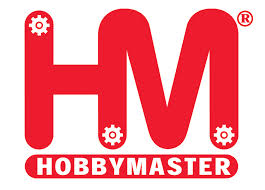 Loading... Please wait...
Loading... Please wait...| Hobby Master 1:48 HA8002 Hawker Fury Mk.I 206, South African Air Force, October, 1940 |
||||
|---|---|---|---|---|
| Scale: 1:48 |
Length: 6.75" |
Width: 7.5" |
Composition: Diecast |
SKU: HM-HA8002 |

HOBBYMASTER AIR POWER SERIES
The Hawker Fury was a British biplane fighter aircraft used by the Royal Air Force in the 1930s. It was originally named the Hornet and was the counterpart to the Hawker Hart light bomber. The Hawker Fury was a development of the earlier Hawker F.20/27 prototype fighter, replacing the F.20/27's radial engine with the new Rolls-Royce F.XI V-12 engine (later known as the Rolls-Royce Kestrel), which was also used by Hawker's new light bomber, the Hawker Hart. The new fighter prototype, known as the Hawker Hornet, first flew at Brooklands, Surrey, in March 1929. The Hornet was a single engine biplane, with single bay wings, initially powered by a 420 hp (313 kW) Rolls-Royce F.XIC engine enclosed by a smooth, streamlined cowling, but was quickly re-engine with a 480 hp (358 kW) Kestrel IS . It was evaluated against the similarly powered Fairey Firefly II, being preferred because of its better handling and its all metal structure compared with the mainly wooden construction of the Firefly. The Hornet was purchased by the Air Ministry at the start of 1930, and was subject to further evaluation, with a small initial production order for 21 aircraft (to be designated Hawker Fury - as the Air Ministry wanted fighter names that "reflected ferocity") placed during 1930. The Fury I made its maiden flight at Brooklands with chief test pilot George Bulman at the controls on March 25, 1931. The Fury was the RAF's first operational fighter aircraft to be able to exceed 200 mph (322 km/h) in level flight. It had highly sensitive controls which gave it superb aerobatic performance. It was designed partly for the fast interception of bombers and to that end it had a climb rate of almost 2,400 ft/min (730 m/min, powered by a 525 hp/391 kW Kestrel engine). An experimental prototype, the High Speed Fury, was built to test design features for Hawker's planned competitor for the F.7/30 fighter competition (the Hawker P.V.3) as well as for more general development. While the P.V.3 was unsuccessful owing to the use of the unreliable evaporative cooled Rolls-Royce Goshawk engine, many of the improvements tested on the High Speed Fury were incorporated in an improved Fury II, with a cleaned up airframe and reduced drag, and powered by a 690 hp (515 kW) Mk4 Kestrel engine. These improvements gave improved speed and rate of climb. Designer at Hawker, Sidney Camm, designed a monoplane version of the Fury in 1933. It was not developed until the Rolls-Royce developed what was to become their famous Merlin engine. The design was then revised according to Air Ministry specification F5/34 to become the prototype Hawker Hurricane.